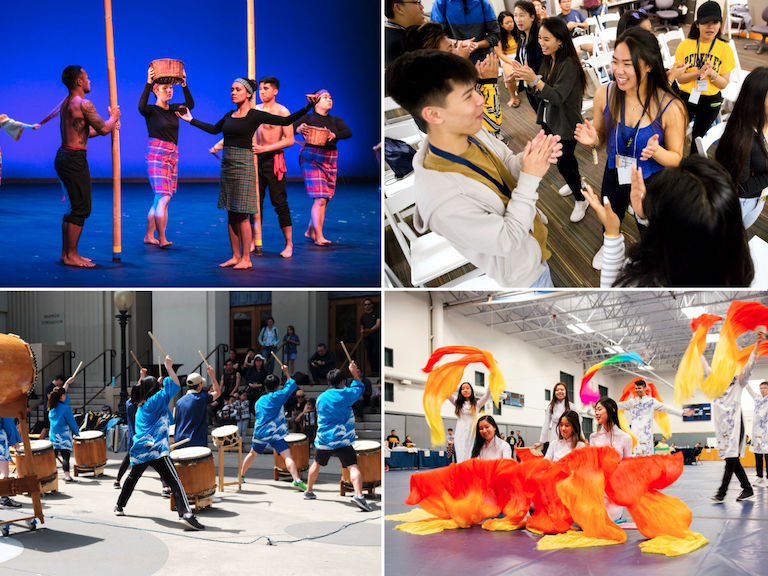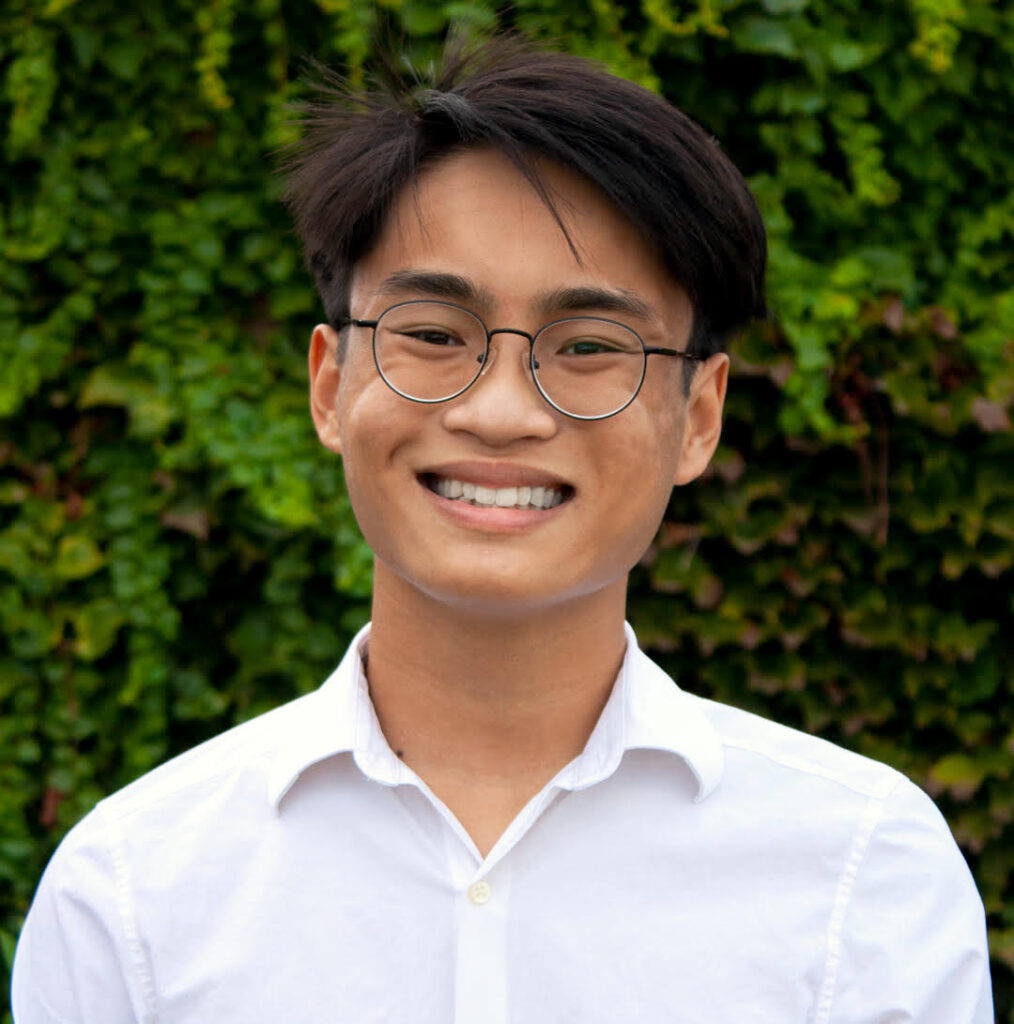
What Does it Mean to Be “AA&PI”?
The month of May is Asian American and Asian Pacific Islander Heritage Month. What does it mean to be AA&PI? Well, it’s complicated. In fact cultural, ethnic, and racial identifiers such as these—while often a great source of pride—are rooted in a complex history. The official government website behind AA&PI heritage month describes the term as applying to: “all of the Asian continent and the Pacific islands of Melanesia, Micronesia, and Polynesia,” which includes dozens of cultural identities ranging from northern climes like Mongolia and Korea, to south of the equator like Samoa and New Zealand. Scholars shed light on the importance of understanding different heritages from Asian American and Pacific Islander cultures. With so many different identities and cultural experiences represented, this month becomes an important time to learn about and celebrate the diversity of AA&PI experience, especially at UC Berkeley.
How does AA&PI visibility appear on our campus?
There is a strong presence of AA&PI awareness at UC Berkeley even when it’s not AA&PI month. Between Cal’s Asian American and Asian Diaspora Studies site and the East Asian Union, there are over 30 groups and organizations on campus that center AA&PI identities. One way students can quickly learn about and connect with student groups is through their websites and social media channels. A handful of these student-run AA&PI groups at Berkeley include:
- Berkeley Cambodian Student Association (BCSA)
- Berkeley Indonesian Student Association (BISA)
- Cal Hawai’i Club (CHC)
- Cal Japan Club (CJC)
- Cal Taiko
- Chinese Student Association (CSA)
- Fei Tian Dancers (FTD)
- Korean American Student Association (KASA)
- Laotian American Student Representatives (LASR)
- Pacific Islanders at Cal
- Southeast Asian Student Coalition (SASC)
- Thai Students Association (ThaiSA)
- Vietnamese Student Association (VSA)
Search for additional student organizations on CalLink .
Meet an Involved First Year Student: Gave
For AA&PI Awareness month, I spoke with Gavriel Curameng. Gave is a first-year student here at Cal, and is heavily involved with the Pilipinx community on campus, as well as many other students and organizations under the AA&PI umbrella. Here’s our conversation.

Gavriel Curameng | he/him, intended major in Political Economy
How has your involvement with the Pilipinx community changed, or contributed to, your experience at Cal?
One of the goals I had when I decided to embark on my journey towards higher education was to immerse myself in the Pilipinx community. Senior Weekend, an event held by the Pilipinx Academic Student Services for admitted first year Pilipinx students gave me this introduction to the community. It’s helped make Berkeley feel small; I am able to see the same people and create this sense of community and belonging. Involving myself in such circles has enriched my experience here, making it so much more than my academic classes. I want to note that the community I get to feel this sense of belonging comes from the fact I stand on the shoulders of the many Pilipinx students who have come before me, creating these circles to allow Pilipinx students to feel this sense of belonging. To these students, I am truly grateful for their work to create such spaces, and I cannot wait to contribute to such spaces to support the next generation of Pilipinx students here at Cal.
What do you think has been the most impactful part of having groups and organizations on campus dedicated to bringing together AA&PI communities?
Like I’ve said before, creating these spaces for students allows them to make this large university feel small. Oftentimes, these spaces are student run and student organized, lacking administrative support. Having these spaces student-run and student-organized sends a message that there’s a community to belong to that’s watching out for you.
You mentioned your involvement with Pilipinx Academic Student Services, Pilipinx American Alliance, and {m}aganda magazine. Can you tell us a little bit about these organizations and their goals?
Pilipinx Academic Student Services (PASS): Dedicated to the recruitment and retention of Pilipinx students into higher education since 1985. A founding member of the bridges coalition, PASS is one of seven recruitment and retention centers dedicated to demistrying higher education for students of color at all levels, but also retaining them at this institution. The Recruitment component does work to recruit Pilipinx students through outreach trips to show students how to access higher education. The Retention component does work to retain students once they come to this institution, through hosting bonding socials or study jams where students can come together to study in an environment made for them.
Pilipinx American Alliance (PAA): “In an ongoing attempt to serve and interact with the Pilipinx Community, the Pilipinx American Alliance stands to promote a network of social support through the encouragement of political struggle, academic excellence and cultural awareness while celebrating cultural diversity.” The first Pil org on our campus, it was born out of the Third World Liberation Front at UC Berkeley. There’s four pillars to PAA: social, political, academic, and cultural. These are the guiding focuses of the organization. One of the prominent programs PAA hosts is the KAApatid Mentorship program, where your kapatid (essentially your big “brother” or “sister”) acts as a mentor during your time at Cal. That’s where I met my Kuya Darius and the rest of my PAAm (shout out Enigma!). These programs allow students to have a community of support ready for them. PAA also hosts the longest running cultural show on our campus, Pilipinx Cultural Night (PCN). The second longest running PCN in the nation, it serves as a visual representation of our community to the broader Berkeley community. Through cultural dances and original songs made by students, it unites students together to explore their cultures and identities.
{m}aganda magazine: “{m}aganda aims to foster critical dialogue within and across our communities through arts, literature, and education. We come from a heritage of Pilipino/American artists, writers, and cultural historians, but we extend our hands and voices to any and all who own truths that need to be spoken.” A literary magazine organization, {m} creates a diverse anthology of works published once a year. {m} is a beautiful space for creative minds and voices to develop a publication that does not just serve the Pil community, but those who wish to have a platform for their voice. Oftentimes in our community, {m} hosts open mics where the community comes together to bond and hear from community artists.
Thanks for joining us for this year’s AA&PI Heritage Month roundup. We loved learning more about Cal’s amazing AA&PI community, and we hope you did too. If any of these groups and organizations sound like your cup of tea, don’t be shy—they’re waiting for you!
Mikena Richards is a third-year at UC Berkeley majoring in English. Feature photos by Student Affairs Communications.